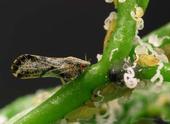
(Credit: M Rogers)
We hope by now most people have heard about and are aware of the Asian citrus psyllid (ACP), a small brown insect that carries a deadly citrus disease called huanglongbing (HLB), threatening all backyard citrus trees as well as the statewide citrus industry.
This insect feeds on newly developed leaves of all varieties of citrus trees and can spread the bacteria that causes HLB. The HLB disease can kill a citrus tree in as little as 5 years and there is so far no cure or remedy.
Learn more about ACP and HLB by joining the free UC Ag Experts Talk on December 5 from 3:00pm to 4:30pm. Dr. Elizabeth Grafton-Cardwell, Director of Lindcove REC and Research...
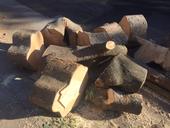
[Originally published in the Fall 2018 issue of the Green Bulletin. Modified slightly from original.]
Invasive insects and diseases are threatening numerous tree species throughout the country. Impacts include tree mortality, destruction of forest and urban habitats, and other significant changes in forest ecosystems due to the decline or elimination of tree species. Many of these pests can be transported in inadequately-processed wood, including firewood and discarded wood debris left behind from tree care operations (Figure 1). Preventing the spread of these pests to new areas is critical for...
- Author: Beatriz Nobua Behrmann
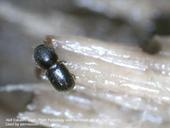
[Originally published in the Fall 2018 issue of the Green Bulletin. Modified slightly from original.]
Invasive wood-boring beetles are attacking hundreds of thousands of trees in southern California, including commercial avocados, and trees within urban landscapes and wildland environments.
The invasive shot hole borers (ISHBs) consist of two closely related and morphologically identical species of beetles in the genus Euwallacea: the polyphagous shot hole borer and the Kuroshio shot hole borer. Despite their small size (1.8–2.5 mm) (Figure 1), these beetles are causing big...
- Author: Siavash Taravati
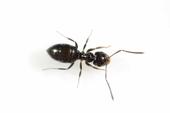
[From the Fall 2018 issue of UC IPM's Green Bulletin newsletter]
The dark rover ant (Brachymyrmex patagonicus) is an invasive species which is increasingly being noticed in Southern California. It is a nuisance species that invades structures as both workers and winged (alate) individuals.
This article aims to introduce structural and landscape pest management professionals (PMPs) to the dark rover ant and includes several important references for readers to learn what is currently known about its biology, behavior, and control.
Identification
Dark...
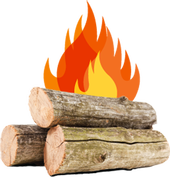
[From the Summer issue of the UC IPM Retail Nursery & Garden Center News]
When you use firewood in the great outdoors, be aware that moving firewood can transport tree-killing insects and diseases. Find out more at the following resources:
- “Don't Move Firewood,” a campaign created by the Nature Conservancy, is an informational site aimed at the general public. You can also print posters, brochures, and other handouts.
- The California Firewood Task...


